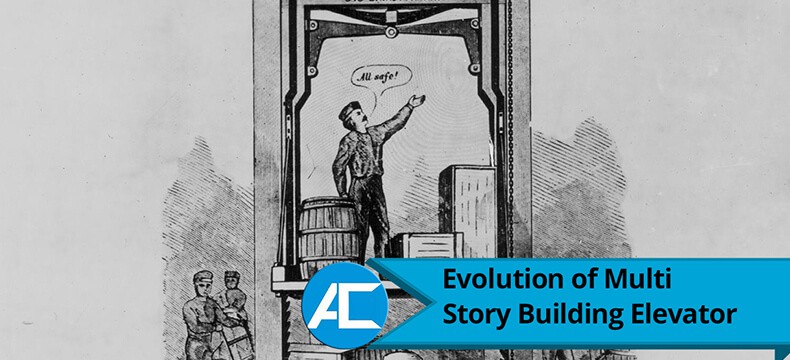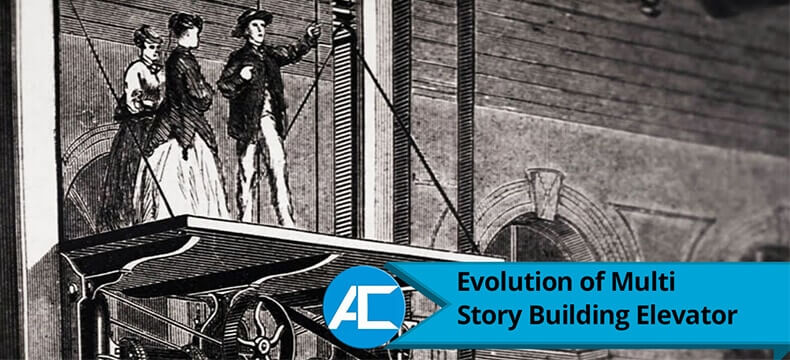In the annals of architectural history, the origins of vertical transportation harken back to an era when the concept of moving effortlessly between different building levels was virtually inconceivable. The rudimentary nature of construction in those early days meant that ascending or descending through a structure required reliance on rudimentary methods such as stairs, ramps, or ladders.
Transitioning into the historical context, it is crucial to understand that structures of limited height characterized the nascent stages of urban development due to the absence of a viable mechanism for vertical mobility. This restriction effectively curtailed the potential of architectural designs and spatial utilization, preventing the creation of towering edifices that define modern skylines.
The pivotal turning point in the evolution of vertical transportation emerged with the gradual realization that the constraints of mere stairs and ramps were stifling progress. A palpable need arose for a more efficient means of traversing the vertical expanse of buildings, sparking the ingenuity of architects and engineers to explore uncharted territories of human ingenuity. This catalyzed the quest for a solution that would unlock the vertical dimension and redefine the possibilities of urban construction.
As history unfurled, the dormant spark of innovation ignited in ancient civilizations such as the Greeks and Romans, where rudimentary lifting mechanisms operated by either human or animal power were devised. Although these early attempts at vertical transportation were far from today’s sophisticated systems, they laid the groundwork for the revolution to come. In these humble beginnings, the seeds of the elevator’s evolution were sown, heralding the dawn of a new era of architectural design and urbanization.
Get Quotes Now : 03017940456The Industrial Revolution and Technological Advancements

With the advent of the Industrial Revolution, the trajectory of vertical transportation took a momentous turn. The burgeoning progress in various engineering and materials science fields spurred a wave of innovation that would reshape the way humans moved within structures. During this period, the foundations for modern elevators began to solidify.
One of the most significant milestones in this journey was the brainchild of Elisha Otis – the safety elevator. In 1852, Otis introduced a groundbreaking mechanism incorporating a fail-safe brake system. This innovation addressed a critical concern that had plagued elevators of the time: the risk of cable failure leading to catastrophic accidents. Otis’ safety elevator heralded a paradigm shift, instilling newfound confidence in vertical mobility and enabling the construction of taller, more daring structures.
In the late 19th century, we witnessed advancements that elevated elevator technology. Hydraulic systems emerged as a formidable alternative to conventional rope-driven mechanisms, allowing for the efficient lifting of heavier loads. This pivotal development paved the way for taller buildings that defined urban landscapes worldwide. Simultaneously, the steady march of electrical engineering brought electric motors, transforming elevators into efficient, reliable, and easily controllable vertical transportation.
As the 20th century dawned, the convergence of precision engineering and electricity set the stage for the rapid evolution of elevator systems. Push-button controls and automatic doors became standard features, streamlining the passenger experience and eliminating much of the manual labor of operating elevators. These advancements marked the inception of a new era in vertical mobility, laying the groundwork for the futuristic innovations that would soon follow.
Get Quotes Now : 03017940456The Rise of Skyscrapers and Modern Elevator Systems

As urban landscapes expanded vertically, the symbiotic relationship between elevators and skyscrapers became increasingly apparent. Moreover, the late 19th and early 20th centuries witnessed an unprecedented surge in architectural ambition, leading to the birth of iconic skyscrapers that redefined city skylines worldwide. During this era of soaring aspirations, elevator technology underwent a transformative metamorphosis to meet the demands of these towering structures.
The development of counterweight systems represented a pivotal leap in the evolution of elevators. This ingenious innovation, which utilized a balance of weights to facilitate smoother vertical movement, not only enhanced the efficiency of elevators but also enabled the construction of higher buildings. Skyscrapers, previously deemed unfeasible due to the limitations of earlier elevator mechanisms, have now become a reality.
The introduction of push-button controls and automatic doors further propelled the evolution of modern elevators. This paradigm shift eliminated the need for operators, granting passengers newfound independence and convenience. Elevators seamlessly integrated into the urban fabric, allowing people to navigate the vertical expanses of skyscrapers effortlessly. Combining efficient mechanical design and streamlined user experience solidified elevators as functional devices and integral components of architectural ingenuity.
In the mid-20th century, they ushered in an era of computerized control systems, marking a watershed moment in elevator technology. These advanced systems optimized elevator dispatching, minimizing waiting times and maximizing efficiency. Innovations such as double-deck elevators and destination control systems revolutionized the vertical mobility experience, catering to the increasing demands of crowded urban centers. The marriage of cutting-edge computing with vertical transportation systems transformed how people interacted with and perceived skyscrapers, setting the stage for even more astounding advancements in the decades.
Get Quotes Now : 03017940456Modern Innovations and Future Trends

In contemporary urban development, elevator technology has evolved beyond mere functionality, embracing innovation that seamlessly merges form and function. As buildings reach new heights and designs become more intricate, elevators have undergone a renaissance, evolving to cater to practical needs and aesthetic aspirations.
One of the defining modern innovations in elevator technology is the integration of sustainability. Elevators have embraced energy-efficient designs and regenerative drives that reduce operational costs and contribute to environmental conservation. This marriage of technology and eco-consciousness underscores the industry’s commitment to a greener future, aligning vertical transportation with broader sustainability goals.
Innovative technology has ushered in an era of unparalleled convenience and efficiency. Remote monitoring and predictive maintenance have become integral, allowing maintenance teams to address issues before they become disruptions preemptively. Furthermore, elevators have transformed into interactive spaces, with touchscreens and personalized experiences enhancing the passenger journey. These innovations not only optimize performance but also elevate the overall user experience.
Under the leadership of Imran Rafi, Access Technologies stands as a beacon of innovation and quality within the elevator industry. With an unwavering focus on safety and an unwavering commitment to cutting-edge technology, Access Technologies has consistently shattered the boundaries of conventional elevator capabilities. Through pioneering endeavors and a relentless pursuit of excellence, the company has propelled the industry forward.
Get Quotes Now : 03017940456